Sign up
Join SIGNATE!
Create an Account

Grow Your Network
Making your profile informative by adding a biography, linking your social media accounts as such.

Job Searching
Receive information about data science job opportunities and get connected with head hunters.

For Educational Purposes
If you would like to use SIGNATE for educational purposes at universities and companies, please contact us.
Guidelines
-
1
Click the Sign up button.
Fill in the required fields on temporary registration information input screen.
- Input username with 2 to 20 characters.
- Usernames must be unique.
- Input password with 6 to 20 alphanumeric characters.

-
2
Confirm the six-digit code
You will receive a six-digit code after filling in the required fields in [1].
- The code is valid for 30 minutes.
- If by any chance you don’t receive the code, please check your spam folder or email settings and contact us from here.

-
3
Enter the six-digit code
Enter the six-digit code you received in [2] and complete the email address verification.
- If you have closed the code input screen, please click the link [To reissue your confirmation code, click here] in the email in [2] to show it again.
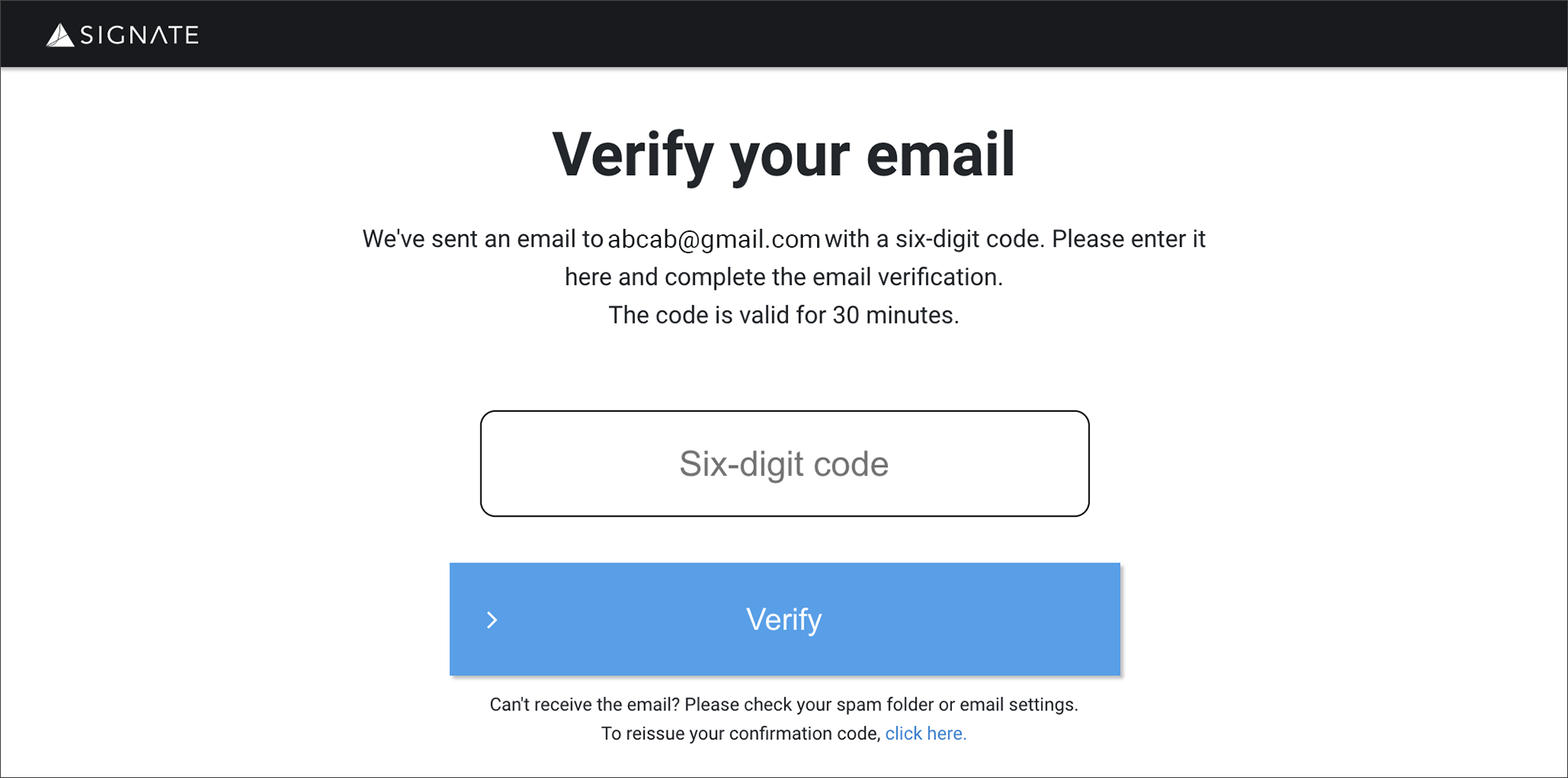
-
4
Fill in the required fields
When the email address verification is completed in [3], you will be redirected to the Profile Details input screen. Please fill in the required fields to complete registration.
- Date of birth is required when you forget your password.
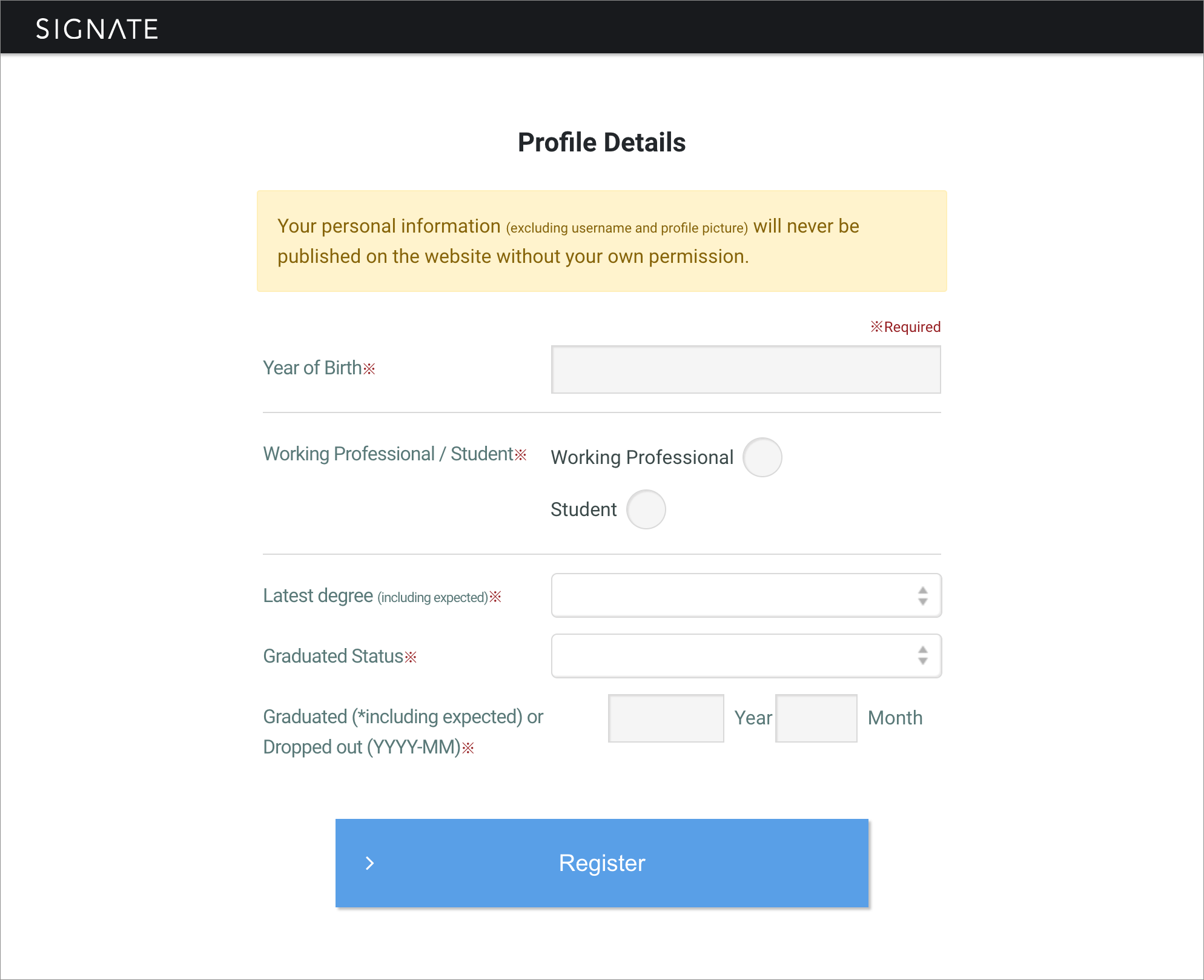
Choose a Competition
Let's participate in the competition!
Guidelines
-
1
Find competitions
You can choose any competitions that are likely to suit your skills and interests!
There are various kinds of competitions that suit everyone's skill level, such as a "With Prizes" competition where you can win a prize if you win, a "Students Only" competition where only students can join, and a "Practice" competition for beginners with no submission deadline.
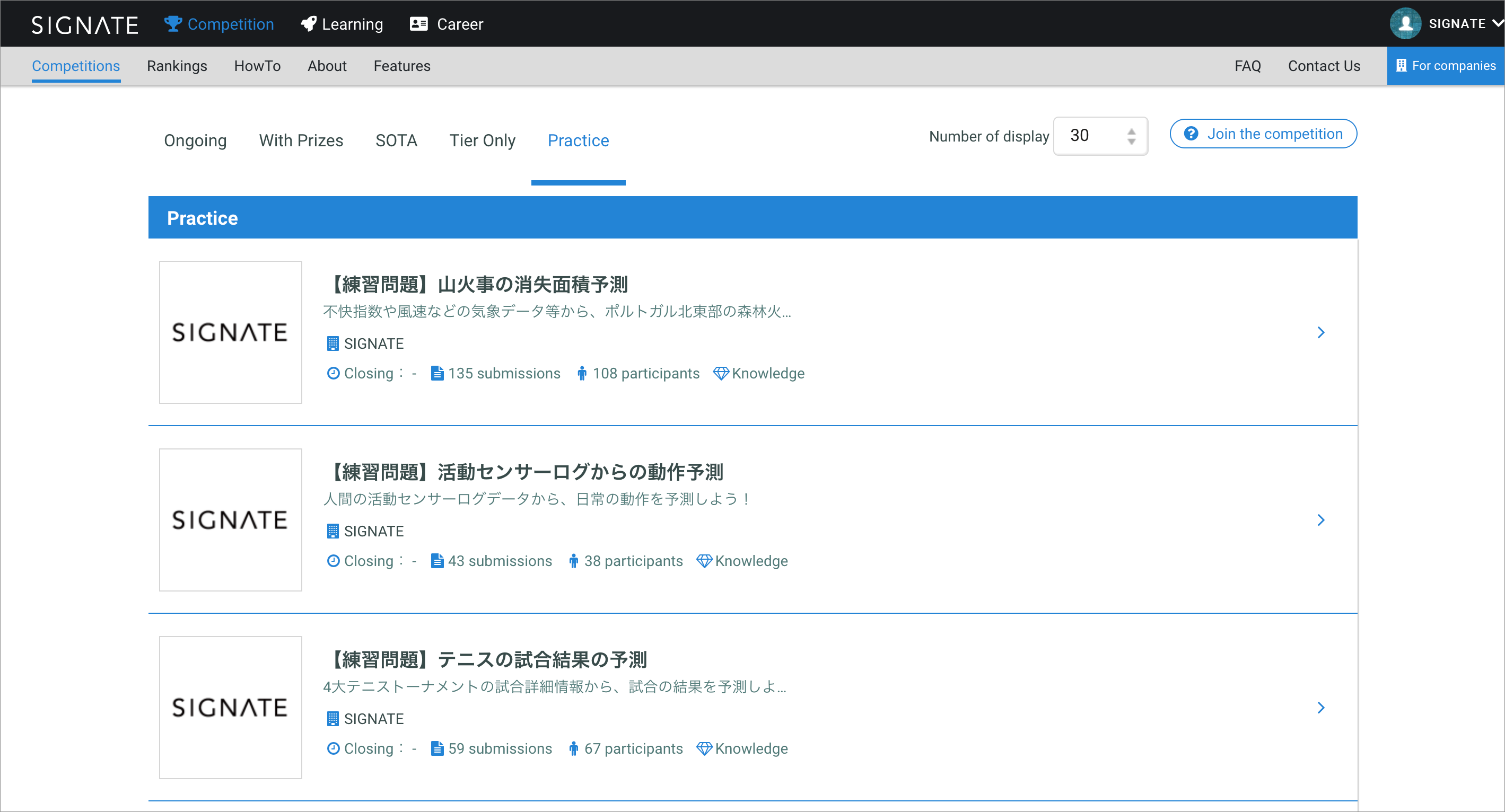
-
2
Confirm the rules of the competition.
Confirm the rules of the competition.
You can see the competition end date, the number of participants and total number of submissions, the details of the prize for the winners, the main types of data, and whether or not they are eligible for points or medals .
Overview: The detailed description of the task and the evaluation metrics will be displayed. Make sure you read and understand the competition rules well first, and then proceed to download the data.
Data: You can download a dataset for the competition. Using the official API command line interface SIGNATE CLI (Beta) enables you to download data and submit predictions from the command line (This is not available for some competitions).
Leaderboard: Live rankings and evaluation results will be updated continuously. Keep track of your rankings and aim for the top. Depending on the competition, various features are available, such as an evaluation method that uses information that will be revealed after the competition is over (LIVE evaluation feature), or one that measures and evaluates not only accuracy but also inference time ( Runtime feature ).
Submissions: You can check the prediction results of the files you have submitted so far.
Forum*: Exchange ideas with competition participants to gain new insights and knowledge.
Tutorials*: Tutorials are available in jupyter notebook format, including procedures of downloading data, modeling with basic approaches, and submission.
Solution*: Winners' reports are published after the competition. Improve your skills by referring to the winning solutions.
Related articles*: Interviews with the sponsoring companies and other articles are posted.
Description: The purpose of the competition and the content of the task are described.
Evaluation: This section describes the metrics used for evaluation and how the winners are determined. Understanding the evaluation metrics in depth is the first step to proceed to the intermediate stage.
Rules: This section contains the rules for using the system and data, handling information, and implementation conventions. Read the rules carefully before starting the analysis.
Schedule: This includes the start and end dates of the competition, the deadline for forming teams, the date for determining the winners, and the date of the award ceremony.
Disclosure policy: This defines the scope of the findings, products, etc. (models and analysis results) obtained from the competition that can be disclosed. For example, if the analysis results are "open to the public," you can post an article share your solution on social networking sites or blogs.
Terms: The terms and conditions that must be observed when participating in the competition are specified. In particular, please note that cracking, cheating, spoofing, and other illegal activities are prohibited.
Create a team: In some competitions you can join as a team .
Submission: You can submit your predictions according to the specified submission format. For competitions using the Runtime feature, you will need to submit the trained model itself and the source code for the inference part.
- Some competitions only
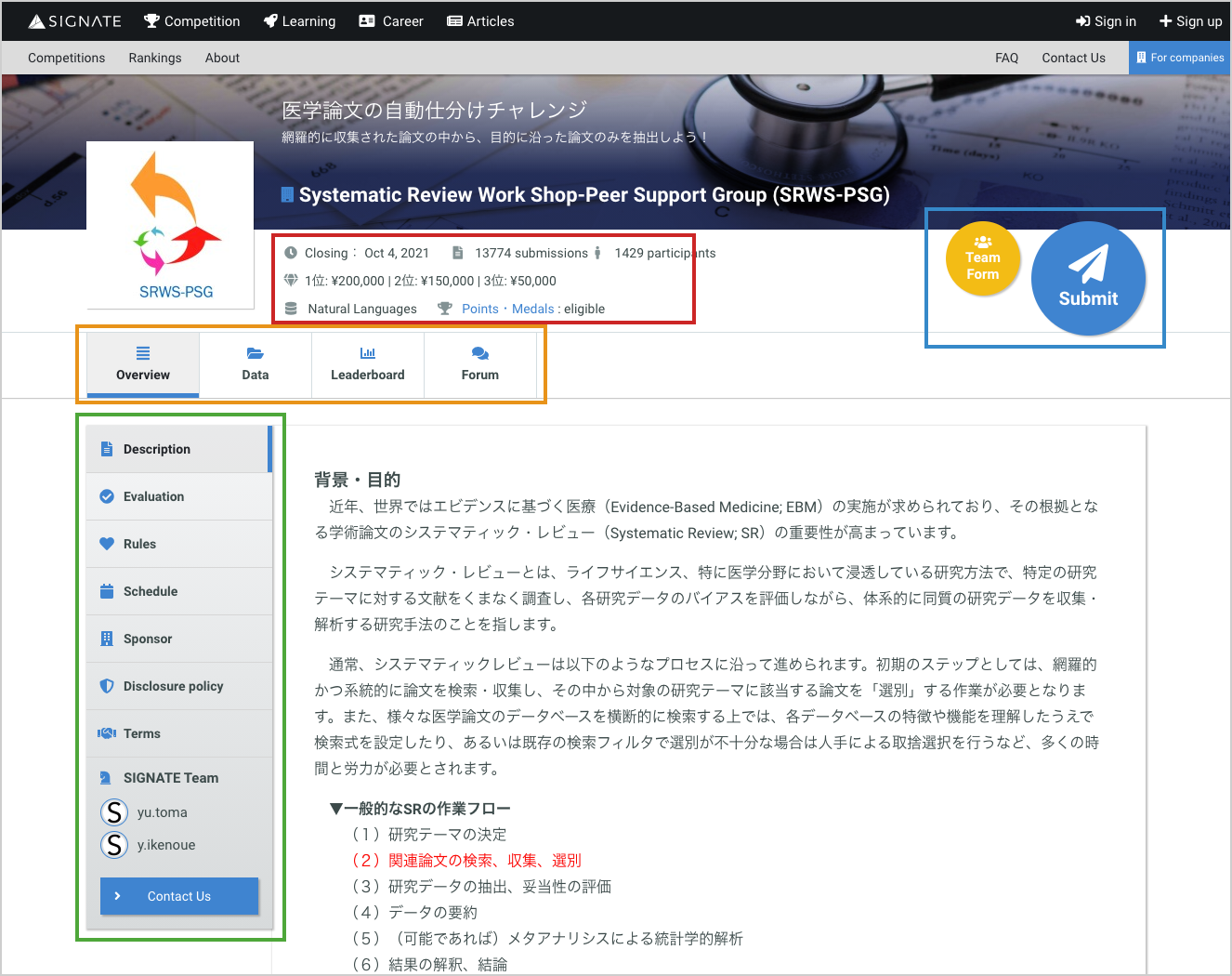
-
3
Agree to the terms of the competition
When you try to download data for the first time in a competition, the terms of the competition will be displayed.
Please read through and agree to the terms.
- You must agree to the terms of each competition to participate in it.
- There are some competitions that require a conclusion of NDA contract and identity verification.
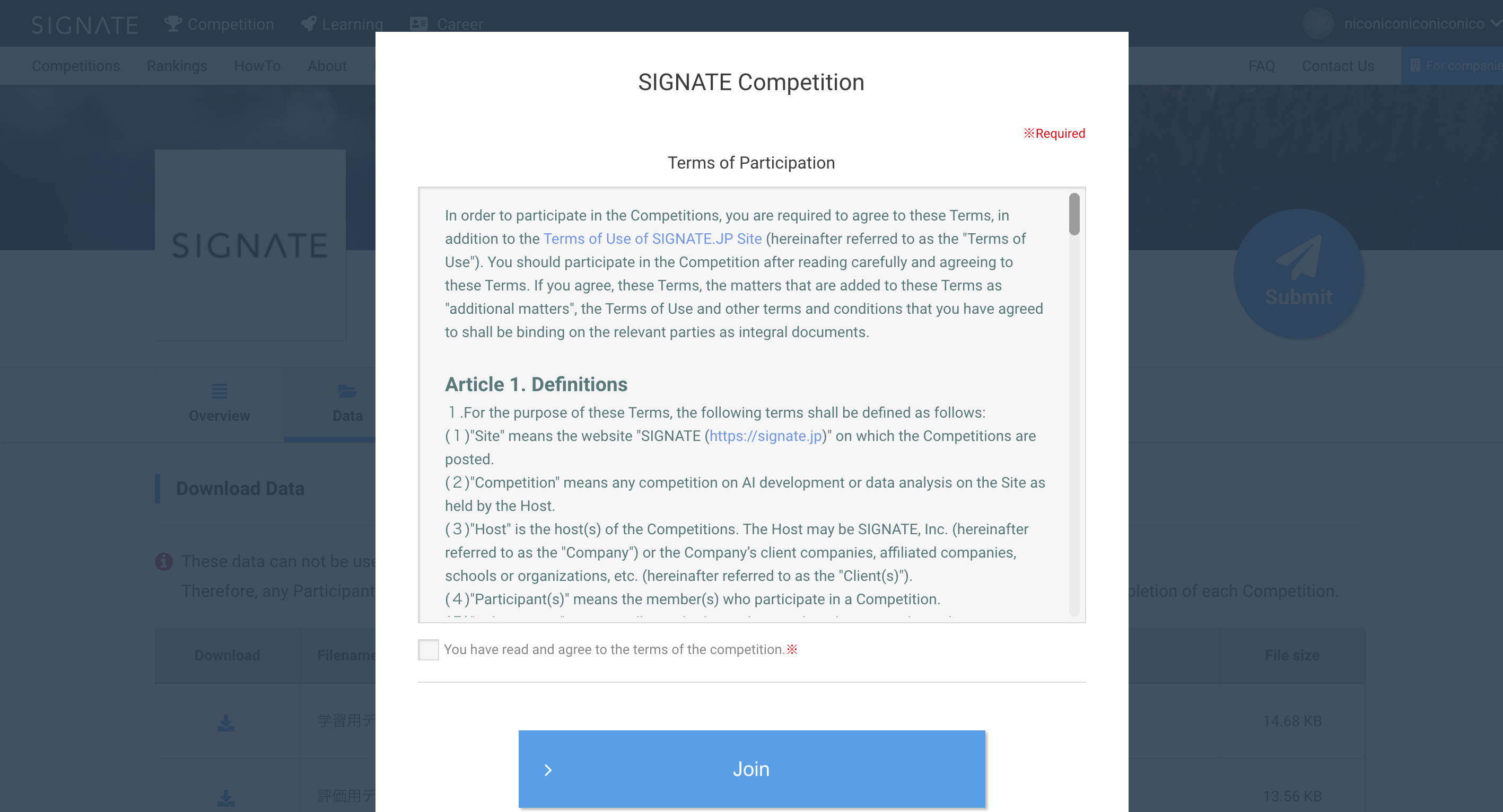
-
4
Download dataset
If you have any questions about data and terms of the competition after taking a look at overview of dataset, please contact us.
- Please do not use the dataset for any purpose other than the competition and redistributing data is prohibited.
- There are some competitions where cloud data analysis environment is provided, which means participants cannot download dataset to their local environment.
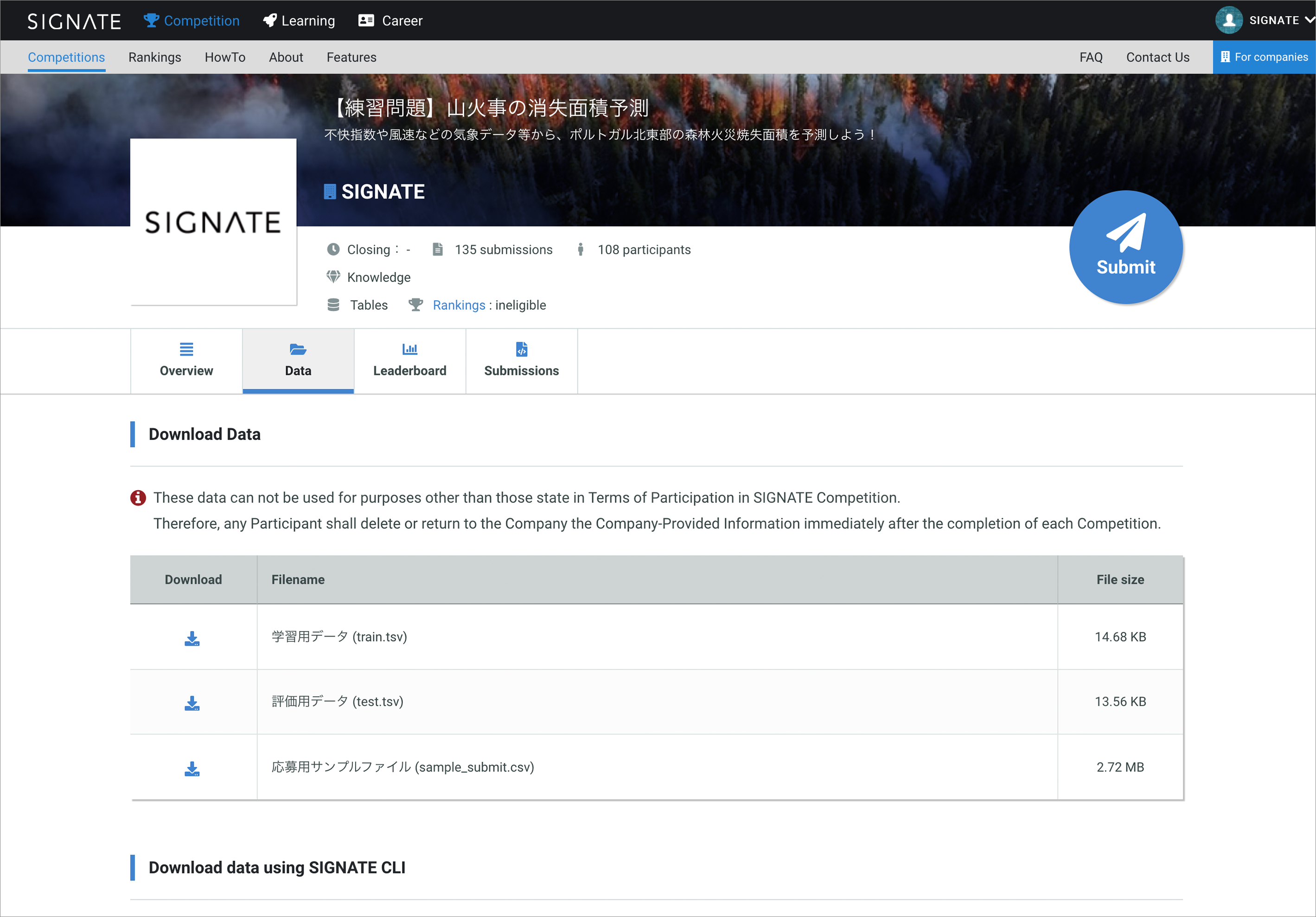
Build a Model
Explore data and create a best predictive model!
Things You Should Know

Confirm the Rules
Please read through the competition rules so that your model won't violate them.

Manage Analysis Results
It would be helpful to reproduce the result when you become a preliminary winner. As there's a chance to win due to disqualification as such, don't be discouraged with bad scores!

Avoid Overfitting!
Overfitting happens when a model learns the detail and noise in the training data to the extent that it negatively impacts its performance on new data, which results in a drop in the final ranking.

Premise
Please keep in mind to create a practical model as each competition has its own goal such as achieving business challenges, solving social problems, and sharing results of studies.
Guidelines
-
1
Explore dataset
Once you have downloaded dataset, get started with figuring out the characteristics of the data. It is important to confirm the number of records in data, category of data (continuous, discrete, string), percentage of missing data, distribution of data, and task type (regression, classification, multi-class, multi-label).
After figuring out the characteristics of the data, it's time to start exploratory data analysis. It is good to analyze to find such as the relationship between the variables, which variables are closely related with the objective variable, and what kind of features seems to be created to gain insight for prediction accuracy improvement, by using the methods like clustering, correlation analysis, and other various approaches.
-
2
Build a model
Once the exploratory data analysis is done, let's move on to the next step: feature engineering and creating a model. Evaluate your prediction accuracy based on the data used to train your model to estimate how good prediction it gives. Then submit the prediction on the test set to SIGNATE to see how it actually performs.
Keep engineering features that are likely to contribute to your model improvement and submit the prediction to confirm whether it works or not.
Make good use of techniques such as cross validation, bootstrapping, feature selection, and hyper parameters tuning to avoid overfitting.
Don't forget to manage your analysis results so that you can reproduce them later.
Automatic Scoring
How good is your model? See how it performs!
Evaluation and Submission

Keep improving model
It's good to see how good other competitors models are and compare with yours. As the competition end date approaches, more and more submissions are made and the competition tends to become hot and intense. Keep improving your model so you can maintain your ranking.

Submission limits per day
Every competition has a limit to the number of submissions per day. Once you have reached the limit of the day, give your brain and machine a break and let's wait for the limit getting reset at 0:00.

Final ranking is determined by the private leaderboard
The test set is split into a public and private part in the competition. During the competition, scores on the leaderboard are computed based solely on a fraction of the test set. We use the rest of the set to evaluate and determine the final ranking after the competition. Leaderboard automatically switches to the final evaluation the moment competition ends, where we sometimes see the leaderboard ranking shaken up.
Guidelines
-
1
Submit predictions on the test set which should be made in the specified format by your trained model.
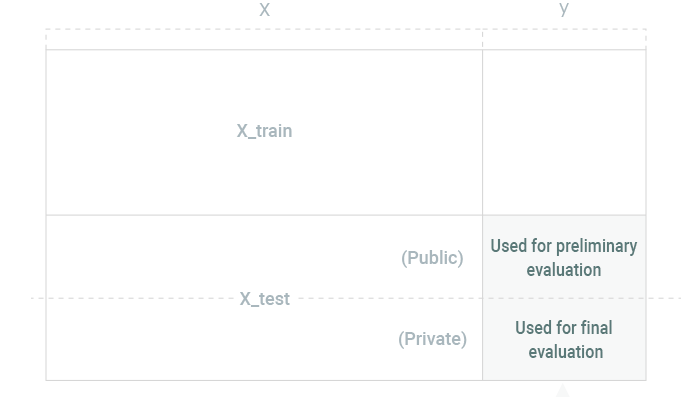
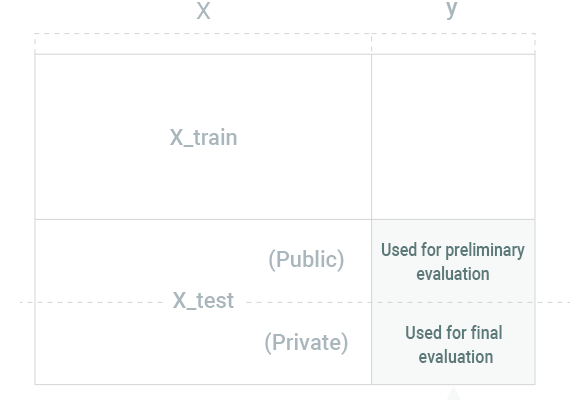
The purpose of the competition for the participants is to produce the model that predicts best on the test set whose objective variable is disclosed.
* Trying to figure out the true value of objective variables on the test set is regarded as cheating which is prohibited. When a participant is found to have cheated in the competition, he or she will be disqualified. -
2
Automatic Scoring
Submission score is automatically computed based on the evaluation criteria to be reported on the leaderboard along with its ranking.
Scores reported on the leaderboard during the competition are temporary ones and after the competition, they will be switched into final evaluation ones.

The leaderboard will be switched to display the final ranking once the competition is closed.
-
3
Iterate step 3 and 4 to improve your score.
Competition Closing Process
Get your model verified to claim the prize!
Procedures to claim the prize

Model submission
Preliminary winners are required to provide their code and documentation. Please make sure that your model can reproduce the final ranking score and does not violate the competition rules. The documentation should be well written and polished.

Model verification
Preliminary winners are required to submit source code and documentation of their model to receive the prize money. Please see the guidelines below for further details.

Transferring intellectual property rights
In order to receive the prize money, the intellectual property rights in your model are required to be transferred to the competition sponsor. * This may not be necessary for some competitions.
Guidelines
-
1
Receive a notification email
We will send a notification email to preliminary competition winners.
- We will notify in a week after determining their final ranking.
- Please check your spam folder if the email is not sent to your inbox.
-
2
Submit source code and documentation of the model
Following our team's instruction, submit your model documentation by the deadline.
- We would appreciate it if you could provide us with well-arranged code and document as it helps us to proceed the verification process smoothly.
- Please make sure that your submitting model is what you used to generate the final evaluation result.
-
3
Get your model verified
After we receive your model submission, we will confirm whether the model violates the competition rules and can reproduce its final evaluation result.
- Please note that our team will contact you when in unexpected situations during the model verifying process.
- To proceed the process smoothly, please provide your model documentation in as much detail as possible.
Here are examples of required information:
- Solution
- Suggestions obtained from analysis and modeling
- A procedure to reproduce the result
-
4
Proceed to accept the payment of the prize
Almost done! By concluding a contract of such as transferring rights, you will acquire the right to accept the payment of the prize.
- After entering into this agreement, in principle, the payment of the prize money will be completed within 2 months.